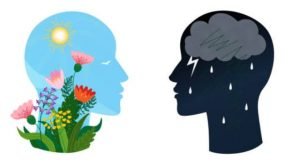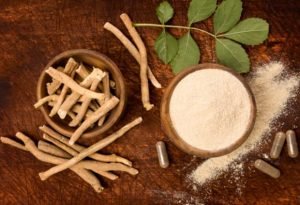
by admin | Jun 7, 2022 | General
How Do We Appreciate Beauty
One Of The Most Complex Processes In Nature We all know that beauty is subjective. We have different tastes in music, visual art, and even people. This is great because it allows for diversity in expression but also guarantees appreciation. Through observation and contemplation, we came to the conclusion that there are some rules regarding aesthetics that are pretty much universal.
Vibrant colors, symmetry, certain patterns, and proportions are appreciated by pretty much every species. Moreover, the arrangement of flower petals or the colors of a peacock’s feathers can be seen as nature’s idea of beauty which is why most of us like them. Even though there are some guidelines regarding aesthetics, like these ones, for example, the subject in its entirety is much more complicated.
We still don’t fully understand how we decide what is pretty and what isn’t. We also have trouble explaining why our tastes are often very different, even if we grew up in almost identical environments. Beauty has baffled the minds of scientists for centuries and continues to do so, and this is precisely why we decided to dedicate an article on this topic!
Let’s learn!
What Is Happening Inside The Brain?

Evaluating certain things as beautiful is a process that happens exclusively in our heads. Chemically speaking, this process takes the form of physical pleasure because of the specific chemicals our brain emits when we see something beautiful. But the more interesting question is where the processes connected with aesthetic appreciation happen.
The main part of the brain responsible for this evaluation is the anterior insula – one of the deepest folds of the cerebral cortex. This was an unexpected discovery when it happened because this part of the brain is usually used for the negative evaluation of objects. Currently, scientists can’t prove why this is the section of our brain used for appreciating beauty.
However, there is one sound theory.
It is basically the idea that earlier humans used this part of their brains to determine if certain foods were good or bad for them, but as they started to create art, they effectively made the same judgment about what they created as they did for food and shelter.
Hence, this is a proposed explanation of the reason why we still use the insula when we evaluate paintings or music.
Pretty cool stuff, huh?

When it comes to faces, however, things get complicated. More than one section is activated when determining if a person is attractive to us. An area called the fusiform gyrus, which is specially tuned to processing faces, is the one which is mainly active.
An adjacent one is also used, called the lateral occipital complex, which focuses on objects. These two small pieces of our brains are the ones responsible for our opinion on whether an individual is beautiful.
Attractive faces also activate our reward and pleasure centers which are located in the front and middle part of the brain.
Beauty & Evolution

The most supported hypothesis is that our sense of beauty has evolved consequently from our need to evaluate objects that are biologically important. The theory is based on the fact that the parts of the brain we use to appreciate beauty are the same ones as the ones we use to understand if something is healthy for us or not (like certain kinds of foods and suitable partners, for example).
Evolutionarily speaking, we understand that beautiful things are also healthy. Think of fruits and vegetables, for example. If they’re proportionate and have vibrant colors, they are likely full of nutrients. The same applies to nature – if a tree is big and symmetrical, its wood can likely be used to make a shelter.
Furthermore, we deem certain facial features as universally beautiful because, from an evolutionary standpoint, that is evidence that our potential partner is healthy. These features are facial symmetry, skin homogeneity, and a healthy body structure. Nowadays, what we see as beautiful is shaped not only because of those qualities.
Our brains take into consideration our environment and past experiences, as well as things such as social media standards.
What About The Skills We Use?
It’s not easy to determine what is beautiful, but it sure is fun. Perception (used for appreciating things we deem as beautiful) and pattern-finding have to be trained like any other skill. Similar to how children are fascinated by simple colored toys, as we grow older, we are fascinated by more complex shapes because we have developed this skill and want a challenge.
The pleasure in bettering perceptual skills, especially when performing, comes when skill matches aspiration. The process itself is often seen by the brain as difficult, but when we achieve our goals, we feel so satisfied that we justify the stress we have been through.
Both consumers and creators take joy in the process.
They also constantly set the bar for others higher through positive or negative feedback. Creators want to impress and have their skills rightfully appreciated, while consumers develop higher expectations after each positive change.
What Is Deemed As Universally Beautiful In People?
Although beauty is subjective, there are some elements that all of us find attractive.
One of them is symmetry.
This is because our brains connect it with health which is, in turn, beneficial from an evolutionary standpoint. More importantly, though, asymmetry in pretty much all species is synonymous with some sort of disease or unique condition. This is why most of the celebrities who are deemed extremely beautiful have very symmetrical facial features.
In opposition to this, however, another factor we humans find attractive is ethnic diversity. We usually find people from mixed races pretty because in our subconscious this means they have more adaptability than an average person. The different genes are representative of the capability to survive in different environments and provide a bigger pool of positive qualities.
Why Do We Enjoy Beauty?
This is a complicated process, and we are not yet sure why we enjoy the beauty for the sake of it.
Aesthetic pleasure is activity-focused. Think of it like cuddling – we don’t have a physical need for it, and we reach a point in which we no longer want to stay cuddled. However, all of us enjoy it from time to time, and it makes us happy. Beauty in this sense is not end-directed like hunger is, for example.
It doesn’t bring us anything essential for our survival. It doesn’t focus on an end goal. Aesthetic pleasure is simply the pleasure of contemplating and appreciating something. We look at beautiful landscapes not because we need to, but because while doing so, we let our brains wander. Psychologically speaking, when we focus on pleasurable activities such as admiring beauty, our worries seem to fade.
From this perspective, beauty is useful because it gives us time to rest and contemplate. It serves as a reminder that not everything in the world has to be goal-oriented.
Final Thoughts
Beauty is a complicated thing for sure. We still have trouble defining it and figuring out where exactly it comes from, but that’s why it’s so fascinating. We have a lot more to learn about it, and that knowledge will surely change some of our perceptions.
Currently, however, we still have a long way to go just to give it a precise description. This is why you can share what you find beautiful and help us understand it better. What is your take on beauty perception? Comment below!

by admin | Jun 7, 2022 | Fitness
Why Fat Loss Is Easier Than Gaining Muscle
If there’s one thing that almost everyone in the gym can agree on, it’s that losing weight is a heck of a lot easier than gaining muscle. And while there are certainly exceptions to this rule, for the most part, it’s true.
So if you’re looking to drop a few pounds before summer hits, read on – you’re in luck! In this post, we’ll take a look at some of the reasons why fat loss is typically easier than muscle gain and offer up a few tips to help you get started.
Ready to learn? Let’s go!
Why Do We Gain Fat

To start, let’s do a brief analysis of both processes to understand what they require.
First and foremost, it would be essential to understand the primary function of subcutaneous body fat (the fat that makes us look fluffy.)
That is, its energy-storage function!
You heard it right – Excess body fat is nothing but your body saying, “Hey, you consumed some more energy than I need to maintain, so I’ll store it for later use!” In essence, even though we don’t like how excess fat makes us look, it is there because the body is smart and doesn’t let any unused energy go to waste.
With that in mind, we can say that when getting rid of the excess body fat, it is best to view it as something you use, rather than something you lose!
Why Do We Gain Muscle

Contrary to gaining fat, which mainly serves as energy storage, we have a different type of gain – That of active muscle mass! Unlike fat, the function of muscle mass is to help you sustain performance through a variety of loads. Generally speaking, the type of muscle mass gained depends on the stimulus created.
If you’re mainly training in the strength range of 1-5 reps with heavy weights, you will induce what’s known as “myofibrillar hypertrophy.” This fancy scientific term refers to the growth of the contractile muscle units, called ‘myofibrils’ (otherwise known as ‘muscle fibers’)
On the flip side, if you’re mainly training in the bodybuilding range of 6-15 repetitions with heavy weights, you will induce some myofibrillar hypertrophy and some ‘sarcoplasmic hypertrophy.’
The latter is referred to as the growth of the ‘sarcoplasm,’ which is a jelly-like fluid that contains energy substances used during prolonged high-intensity activity. In simple words, such training results in greater strength endurance.
But Why Is Gaining Muscle Harder?

The answer to this question is quite simple – Gaining muscle basically implies adding active mass that has more complex functions than fat!
This means that all the stimuli and internal processes that lead to the gain of active muscle mass are much more complex and more challenging to nail than those that lead to fat loss. Because with fat loss, you have a couple of basic principles to follow that will get you most of the results.
Those are namely:
- Eating in a caloric deficit
- Consuming enough protein/fats and some carbs
- Sleep well/manage stress
Contrary, in a muscle-gaining phase, you have to:
- Consume food in a caloric surplus
- Progressively overload
- Nail rest-times between sets
- Nail rest-times between workouts
- Sleep well/manage stress
Now, of course, that is not to say either process is a walk in the park when you start doing it. However, gaining and maintaining quality muscle mass is a much longer process, which leads us to believe that generally speaking, fat loss is a tad bit easier!
That is, of course, if you find a sustainable approach you can stick to (which should be your primary goal when building up your fat loss regimen.)
Final Thoughts
If you want to lose weight, it may be easier than you think. But if your goal is to gain muscle mass and increase strength? It’s a whole different ball game.
The key difference between fat loss and gaining muscle is that the latter requires commitment and consistency for MUCH longer periods of time – something most people don’t have!
Which body transformation goals are you working on at the moment? Let us know in the comments!

by admin | Jun 7, 2022 | Health, Technology
Why You Should Have At Least One Hour A Day Without Technology
Staying Connected Both With People And With Nature Today technology is everywhere around us. In fact, most of us can’t imagine life as it is without it. This may sound weird at first, but it is actually completely logical the more you think about it. Technology is part of pretty much any and every aspect of our lives and has been for years.
So imagining a world completely void of it – well, it wouldn’t be a very similar place to what we have now. We as a society developed in this way in large part thanks to the technological advancements that have been incorporated into our daily lives.
And that’s in no way a bad thing.
We have a lot to be grateful for in terms of how technology has helped us. In the following article, we explain why technology as a whole is so important and why this doesn’t mean we should always use it. Consider this an addition to our article about digital minimalism, which you can go to by clicking HERE.
We hope you find this as fascinating as we do!
Why Is Technology Important?

We think everyone can answer this question. For starters, some technology is used to literally save lives. Talk about hospitals, fire departments, quick-line communications – all of these incredibly important aspects of our lives are the way they are solely because of technological advancement.
When you look back 500 years, for example, you can see how drastically our lives have improved today thanks to the tools we use and the knowledge we have.
In large part, we have science and technology to thank for that, and that’s no small feat.
Human-To-Human
Secondly, technology is also our best facilitator for connection. Nowadays people from across the globe can talk to each other as if they’re sitting at the same table thanks to the internet and cameras. That alone would have been considered a miracle less than a century ago.
And this isn’t the only type of connection made possible thanks to technology. Information in all of its forms about pretty much any topic is always at the tip of our fingers. The moment we decide we want to learn something, we don’t have to visit libraries or rely on word of mouth – we can simply pull out our phones and start googling.
Both of these things have reshaped our worldview and way of life as a society and have done so in a mainly positive way.
The Entertainment Side!

Last but not least, we use technology for entertainment too. Streaming music, watching videos, hell, even roller coasters are reliant on computers. We can have so much fun thanks to technology, and it’s amazing that it is not the only thing we do all the time.
And not only that, but largely speaking, this also helps the artists themselves. The fact that people’s favorite musicians are sometimes from other continents is proof enough that technology is useful in this aspect too.
Why Should You Have Some Technology-Free Time?
With all that being said, why do we believe we should have some time without technology? With all of its positive sides, how is it possible to not want to spend every second surrounded by it? Well, to put it simply – too much of a good thing can be bad.
Firstly, staying connected to everyone and everything all of the time can be exhausting. Not only that, it’s much harder to truly focus on yourself and your own thoughts when you’re constantly seeing and hearing everyone else’s.
That may not seem like a big deal at first, but it really adds up through time and has been linked to problems with self-understanding and development. Secondly, you can only appreciate something in its entirety when you know what it’s like to not have it. As much as we try to escape this simple fact, it’s true. Lacking something is the only way to appreciate every aspect of it.
And that is actually a good thing.
Why?
Because when we have a fresh and sound perspective on something, we can understand what parts of it are really important to us. And that can’t happen if we are constantly using it. What’s really important about technology today is that we shouldn’t let it govern our lives.
It’s really easy to go with the flow and just spend all day on your phone, but we all know that’s not really productive. Not only that, spending too much time browsing social media, for example, can have a negative effect on how we see the world or ourselves.
The Natural Human

Now, perhaps the most important point of this article is that we as people are natural beings. Our environment benefits greatly from technology, true, but it shouldn’t overtake it completely. A myriad of studies shows that we feel our best when we are surrounded by nature.
Our surroundings are incredibly important to our mental and physical health, and spending some time in our natural habitat is mandatory if we want to stay healthy.
We believe that balance is key.
This is why finding this equilibrium between technology and nature is the best possible thing we can do. Just one hour a day without technology can be very beneficial if we want to stay happy and healthy. That doesn’t sound too hard, does it?
Final Thoughts
Technology is incredibly important. More so, it’s an integral part of our lives. It is the reason behind many positive changes to our lives which is why it is so widespread. However, this doesn’t mean that we should depend solely on it to make us happy and have fun. In today’s day and age, more and more of us are starting to have a negative relationship with tech, which is why we decided to write this article.
We believe that finding the balance between technology and nature is the only way to make sure we get the best of both worlds. Our idea may seem a bit weird at first, but it’s a great first step towards finding that balance.

by admin | Jun 6, 2022 | Health, General
Why you SHOULD eat Honey
Honey is an organic, natural sweetener that serves a great purpose as a sugar alternative.
It is widely used in almost every cuisine around the world.

This is perhaps because it has many great qualities such as its indefinite shelf life, its ease on the stomach, and the reason that it adapts to all cooking processes. According to an article by Date Carson, honey dates back to 2 100 B.C. It is believed that the natural sweetener was found in Asia or Africa.
On top of that out of 12,000 different bees, there are only a few varieties that store honey. An average bee’s life span is from 4 to 6 weeks and the required amount of bees to produce 450g (1 pound) of honey is around 160,000. That means, in order to get a single jar of honey, there are so many generations of bees involved.
Honey is also used in Medicine…
According to a 2012 review, regardless of whether it will be consumed directly, mixed with other remedies, or applied directly to the skin honey helps for treating the following illnesses or injuries:
- Coughs
- Vomiting
- High Blood Pressure
- Obesity
- Arthritis
- Eczemas and dermatitis
Now, let’s look at what are the pros of eating honey.
Benefits Of Eating Honey

- Honey Helps With Coughing
We bet that the good old honey came in handy at least once in your lifetime. It is believed that honey is an effective measurement against a cough in children and adults.
One or two spoons before bed is a guarantee for a calmer night.
- Honey Supports A Healthy Guy
According to a study from 2017, honey contains prebiotic properties. As we know, prebiotics help ferment beneficial bacterias in the gut. Furthermore, this was related to a stronger immune system and general welfare.
- Honey Contains Quality Nutrients
Honey is not only rich in antioxidants, it is also very rich in nutrients. It is found that there are 31 minerals found in honey, such as magnesium, phosphorus, potassium, and calcium.
In general, honey cannot be a substitute for a healthy diet, however, it does contain many important nutrients in its complex structure, which can benefit us on many levels!
- Honey Is Rich In Antioxidants
Some types of honey help protect your body from cell damage. It is believed that there are almost the same amount of antioxidants in honey as in fruits and veggies. Having antioxidants in our diet is healthy because they may prevent the development of chronic diseases like heart disease and cancer.
- Honey Improves Your Sports Performance
As we know honey is far better than glucose from sugar, used to boost endurance.
Consuming a spoon of honey before or even during your training is believed to enhance your athletic performance.
Pro Tip:
Add a spoon of honey to your bottle of water and consume it during your session.
But with so many benefits, is there something that could go wrong?
Cons Of Eating Honey
- Honey Is Rich In Calories
If your goal is to decrease body fat percentage, then consuming a lot of honey might not be a good idea.
Because of its liquid form in most cases, eating too much honey can easily make you exceed your daily caloric intake.
Always strive NOT to exceed the recommended amount of honey per day, which is around 1-2 small spoons for a healthy person without any weight problems.
- Honey Raises Blood Sugar Levels
For this reason, always use honey in moderation.
- It’s a Risk to Give to Babies
Babies don’t have the required digestive system to consume honey, and there is a risk of botulism.
Takeaways
Honey is one of the oldest foods in the world and it is used in almost every cuisine around the globe, as well as in medicine.
It has many benefits but should be taken in moderation because it can be very calorie-dense.
Thank you for reading and don’t forget to share the article with a friend!

by admin | Jun 6, 2022 | Workouts
The 3 Training Factors
If you’ve been in the game of training for some time, or are relatively new and are just gathering information, you probably know that training progress is only achieved by creating proper stimulus.
And while you can look for workouts on the internet, there is one very important thing to learn and understand – What’s actually happening beneath your skin when you’re training, that leads to progress?
In this article, we’re going to look at the 3 most important factors in your workout that induce sufficient stimulus for progress.
The Muscles

Before we dive deep into those 3, let us just tell you that your musculature is a complex system, built for high performance.
The muscle tissue is very adaptive and for that reason, it grows stronger and bigger if it has to do a lot of work.
Oppositely, if it doesn’t do any work, it will get weaker – If you don’t use it, you lose it!
The 3 Factors – Metabolic Stress, Mechanical Tension, Muscle Damage
When we look into the science of muscle growth, it appears that these 3 factors are the primary contributors that trigger the pathways that lead to muscle growth. Let’s have a look at why that actually makes sense
In order to grow and adapt, the muscles need more mechanical tension, created by the progressively increasing training load (more weight, sets, reps). When exposed to a new load that the muscles have never experienced before, the muscles are technically overloaded.
In turn, to endure this, the muscles send signals to satellite cells, which bind to the damaged muscle cells and in result, the muscle adapts and grows. This implies that mechanical tension is what induces muscle damage and that therefore sets off a flurry of reactions in the body that allow the muscle to recover and increase its volume, capacity and efficiency.
Pretty cool, right?
What About Metabolic Stress?
The third important factor for muscle development is metabolic stress, which may sound like a fancy term but let us explain. Basically, while you are training at a high intensity with weights, you use up a lot of the muscles’ energy. Needless to say, all this energy is broken down into byproducts, which we refer to as “metabolites”.
These metabolites act as “anabolic signals” that, again, set off a hurricane of anabolic (constructive) processes that allow for muscle recovery and adaptation.
How Should I Train, Then?
Generally, in your workouts, you should look for a balance of effort and volume. For instance, lifting just the bar for 100 repetitions won’t really cut it. Choose a weight that is challenging enough to take you through a set of 6-10 reps, but just a couple of reps shy of failure. Use challenging weights and do 10-20 of those, per muscle group, per week.
You should even consider going down to the strength rep range of 1-5 repetitions. All of this will help you create a strong, aesthetic, stamina-abundant body, which, with the right approach, you can take to your older years.
To Wrap It Up
It appears that metabolic stress, mechanical tension and muscle damage are the 3 primary factors that set off the reactions that allow the muscles to adapt and grow stronger.
Neither one alone will be optimal, which is why in practice, you should rely on challenging lifts in your workouts, in sets that take you close to failure.
Train smart, stay consistent!
























